D-Day American Special Missions
One of the great sections contained towards the back of the new D-Day American book by Battlefront is the special missions that are thematic to D-Day. “Shot in the Dark“, “Help’s On Its Way” and “Fubar” model the airborne landings, the daring ranger assault on the coastal defenses and the landing themselves.
Battlefront has structured these such that they can be played individually or as a linked mini-campaign where the outcome of one game influences the next. It’s not quite a firestorm campaigns of yore, but certainly within the spirit of those past designs.
For this article, I’m going to talk about the special missions and the linked campaign. Having participated and help run a set of D-Day games at D6 Games in Rochester Mn, I’ve been very eager to understand how Battlefront would evolve past material into the v4 era.
One of the criticisms levied against some of the v4 source books is that they don’t have enough of a historical tie-in. The D-Day design that the Battlefront crew has come up with, I believe, will surpass the expectations of these boo-birds. The D-Day book is all about D-Day and gives you the tools to recreate those times on the table top.
Shot in the Dark
This mission is an airborne assault and features all the ‘in the dark’ random chaos that you’d expect as airborne troops make do given the conditions and the defender tries to both anticipate where the attacker will be landing as well as covering the objectives. The mission handles both airborne drops or gliders.
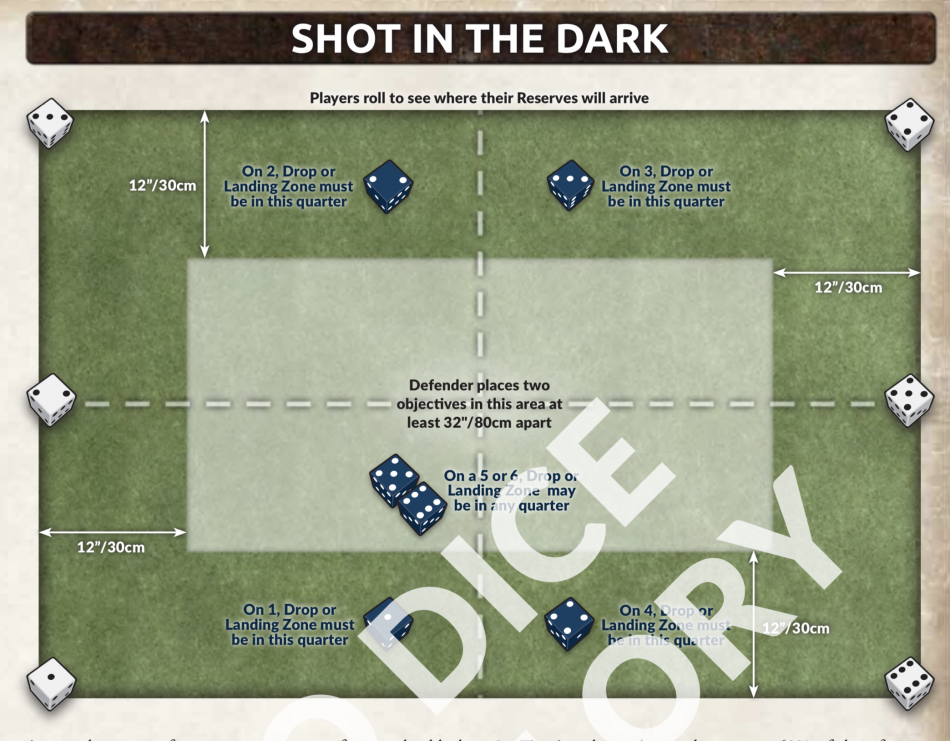
The objectives are in a fairly large 4’x2′ box in the center of the table. The defender has scattered delayed reserves and the attacker has delayed scattered delayed reserved.
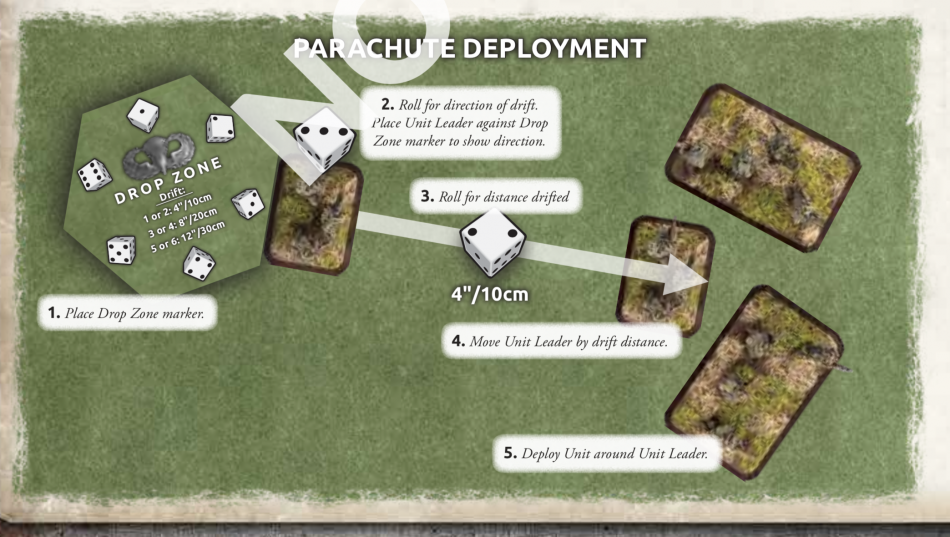
Airborne places a drop zone marker using a die roll to determine which of the four zones it might be placed. The attacker places the marker and then for each unit, rolls to determine the amount of drift which will range from 4″ to 12″. You place the unit leader at that distance from the marker and then deploy the rest of the unit within command distance. The unit does not start dug in or gone to ground. This is done for each unit.
The attacker does NOT have the first turn, the defender does.
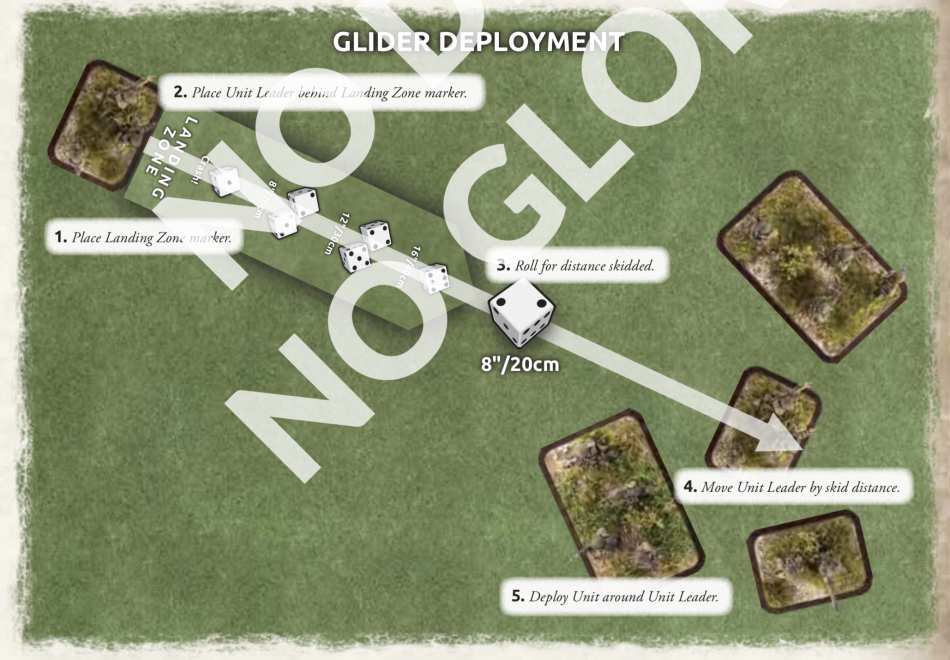 Gliders has a similar system for deployment, a die is rolled for which quarter, you place the marker, and roll a die to determine how far afield your landing might be. A one is a crash. As you’d expect you’ll have lots of save rolls for all the teams in the unit to see if they survive.
Gliders has a similar system for deployment, a die is rolled for which quarter, you place the marker, and roll a die to determine how far afield your landing might be. A one is a crash. As you’d expect you’ll have lots of save rolls for all the teams in the unit to see if they survive.
As you would expect for both paratroopers and for gliders, rough landings are possible where you might drift into difficult/impassible terrain. Drifting too close to an enemy unit is also part of this category of problem. It’s handled by adding a further 4″ of drift and then the attacker must roll a save. Presuming they pass and that the obstacle or enemy is no longer problematic that’s the new landing spot. If however, they are still in impassible terrain or within 2″ of the enemy the unit is destroyed.
To win Shot in the Dark you must take the objective as the attacker on or after turn six. The defender wins if by the end of the turn on or after turn six no defenders are within 8″ of an objective.
Help’s on its way
This mission models the D-Day landings. Besides the mission special land area terrain is defined for the players. The beach is a cross test. Surf is a cross test. Sea Wall is a cross test at +3. This all models the importance of the special hardware designed to get the allies ashore and help their armor be more effective.
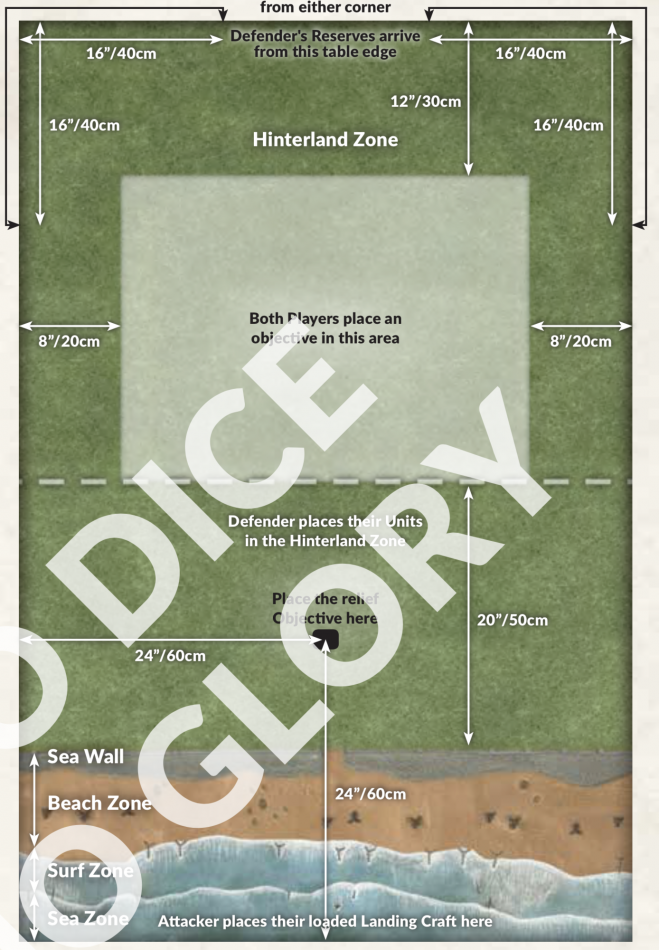
Setup for this mission and FUBAR is a bit more complicated as the defender receives eight fortification point, one minefield AND one minefield for each 25pts in the attacker force. The attacker lands with 60% of their force and the remaining 40% is coming from inland. The defender receives just 40% of their force and likewise arrives from the same entry points as the attacker’s reserves.
Just like the prior generation of Flames of War D-Day rules the attacker has a preliminary bombardment where for each defending team, on a 4+ it is hit before the game starts and must resolve a 5 AT AUTO FP which represents the all the naval guns coming down in support of the landing craft.
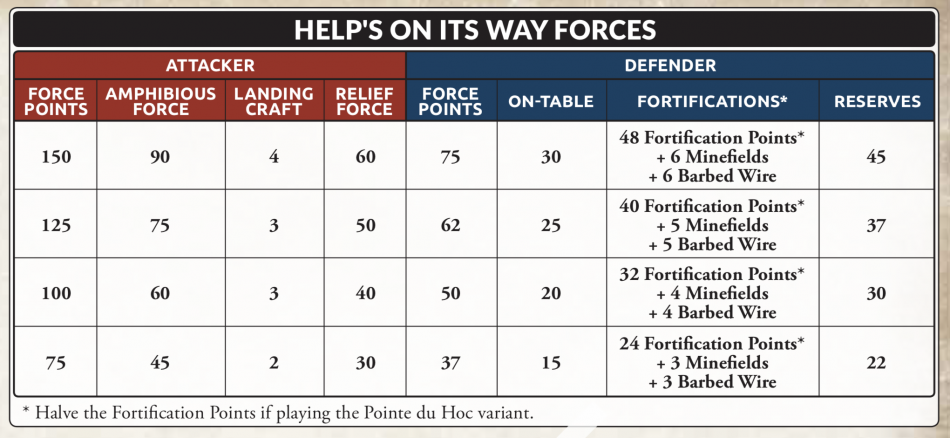
Another aspect of this mission is a different force point approach. IF the attacker has 150 points to spend the defender only gets 75 (meaning 1/2) and then has 48 points of fortifications + 6 minefields and + 6 barb wire sections. Cost for fortifications are found in the D-Day book so you’ll not need to wait for the German D-Day book in order to start playing. An 88 in a bunker, for instance, is 12 points. Fortifications have their own force diagram so you’ll not be able to field all anti-tank bunkers. That’d be both silly and not historical.
There are additional bits of flavor, for instance, the defender must roll for air on a 6 modeling the much reduced German airpower on D-Day. Obviously, the attacking force must land via landing craft. The attacker doesn’t start rolling for their reserves until turn 6 or until they’ve taken the special “relief” objective. For the units coming in via landing craft, if they are destroyed you can recycle them to land again. You can voluntarily destroy a unit to have them land again. This, however, excludes tank and gun teams.
To win, the attacker must by turn 12 or sooner hold both objectives. That’s a long time for the defender to hold out especially given the defender isn’t able to recycle units. However, the attacker is constrained getting onto the beach and has to contend with a very hearty defense.
Pointe du Hoc is included as a variant for this mission. It models the US Rangers who had to climb massive cliffs to get to the German coastal defense guns.
FUBAR
This mission is similar to Help is on the Way however with a few twists. The defender gets the first turn. The objectives are more constrained in their placement having to be closer to the sea wall and on the beach half of the table.
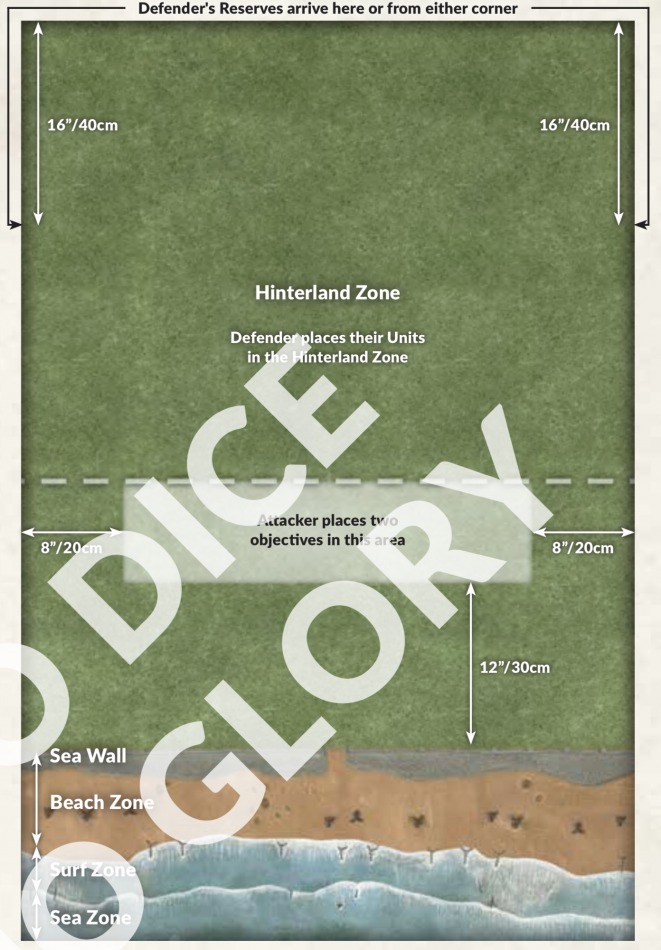
The attacker does not have any reserves, everything is coming in from the sea. They retain the ability to cycle infantry units through the Overwhelming Force rule. They retain the Preliminary bombardment and the Driven from the Skies special rule.
The defender just the same as Help’s on the Way only deploys 40% of their force. They have the same set of force points, minefields and wire. Their reserves are deep immediate, so they’ll get their relief much quicker to help push the allies back into the sea.
To win, by turn 12 the attacker must be holding both objectives.
Landing Craft
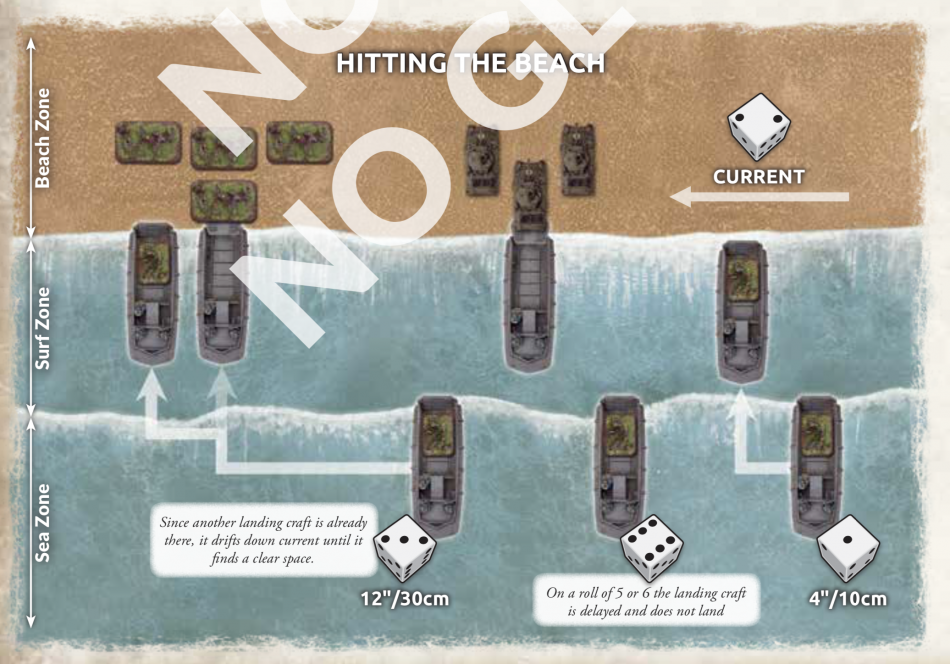
The attacker receives one landing craft for every 25 points in their force. They have to decide how to load up their forces and depending on the scenario potentially have to bring it everything over the water.
Before the game, you roll for the direction of the current. When a landing craft is coming in, it has to roll to see how far it drifts (up to 16″) or on a 5 or 6 is stuck out at sea.
After a landing craft has dropped off its load, on a 4+ it can return out to sea for another load, otherwise, it remains on the beach.
Summary
There is some really great flavor in this part of the book to conduct D-Day operations and face the same challenges both sides had to contend with. The special missions are not focused for tournament play but instead specifically geared for those wanting to recreate the historical situation. It’s a great opportunity for the player or a club to have a special themed game day to just enjoy the game.
I hope you’re as pleased with what you read in the book as I was.
Last it might have crossed your mind, it certainly popped into mine one could adapt these rules for the German Operation Sealion as a what if kind of game. Likewise, the Pacific is another area where these kinds of scenarios would be perfect to apply. While we might not have v4 point values for the Japanese or Americans that’s entirely ok, you know it’ll be fun!
